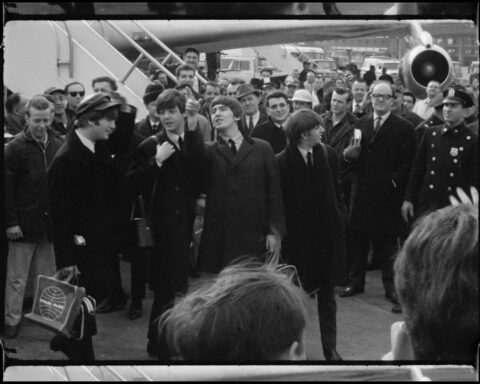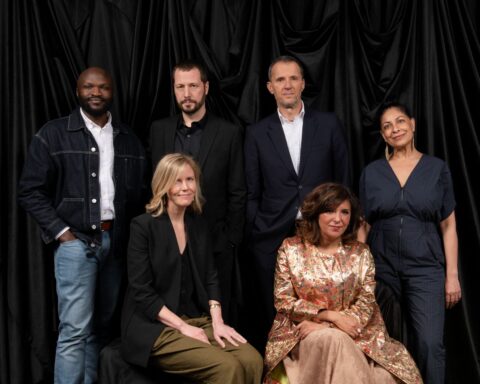Jimmy Carter: Rock & Roll President
(USA, 93 min.)
Dir. Mary Wharton
Bill Clinton often gets credit as the USA’s musical President since he plays the sax, but nobody rocked out like Jimmy Carter did. Mary Wharton’s film Jimmy Carter: Rock & Roll President argues that Carter’s love for music might have clinched the deal for his election. The film offers a rollicking look at the role of rock in shaping Carter’s image, humanising him, and making him accessible to a new demographic of Americans. Wharton’s doc illustrates how Carter used the power of music to break out of the shell of his peanut-farmer image. Jimmy Carter: Rock & Roll President assembles an impressive roster of musical greats, including Bob Dylan, Willie Nelson, and Gregg Allman, along with contemporary musicians like Bono, Garth Brooks, and Trisha Yearwood. Carter himself is the prized interview of the documentary and remains a humble and delightful raconteur.
The film offers a retrospective journey from Watergate to Reaganism. Wharton uses the collage of interviews, musical tracks, and archival footage to convey how Americans longed for an accessible President. Coming off the Vietnam War and Richard Nixon’s scandalous fall, the climate in the USA demanded a man of the people. Rock ‘n’ roll proved the ticket for Carter, who employed his love for the sound of the era to speak to a broad spectrum of Americans.
Carter and his son, Jack, recall the early days in Georgia when the future President cranked groovy tunes on his massive stereo. The Carters and company remember tapping into the cultural pulse that expressed itself through music, while other interviewees speak to Carter’s upbringing in the small town of Plains, Georgia, where he interacted with Black Americans more comfortably than his predecessors in the Oval Office did. Music doc connoisseurs, and rock enthusiasts generally, know the role of music in bridging races and cultures in the USA, and Jimmy Carter: Rock & Roll President continues the essay with Carter as a case study. His love for music, moreover, invites a window into his progressive politics, as music—especially the landmark rock of the Vietnam War years—gave voice to the people through protest songs and politically charged tunes. Dropping a pin on the records enjoyed by millions of Americans is one way of keeping abreast of the times.
Wharton’s film examines how Carter’s love for music and for hanging out with rock stars electrified his campaign. The doc features extraordinary footage with top-tier musical acts using their celebrity and influence to attract large crowds of voters, particularly young ones, and make Carter appealing through their endorsements. Celebrity campaigning, as annoying as it can be, proves an effective tool for reaching audiences who are more culturally than politically inclined—but the doc also shows how culture and politics are inextricably linked.
The film also invites conversations about the perils of hobnobbing too much with celebrities. Carter’s White House staff members reminisce about the days when rock stars would simply materialise expecting face time with the President. However, the memories are more fond than frigid as the interviewees recall keeping the stars occupied while Carter toiled through his Presidential duties. Other interviews speak to Carter’s ability to stickhandle public perceptions of his progressive attitude. Gregg Allman, for example, recalls being caught with marijuana when his friendship with Carter was in the headlines. Rather than distance himself from Allman, Carter used the incident to teach his fellow Americans about forgiveness and recovery.
Wharton offers an extended look at the Iranian Hostage Crisis that ultimately defined, and defied, Carter’s presidency. His views in this sequence are not as strong as the material elicited in Barbara Kopple’s Desert One, yet the footage adds to the presentation of the Iranian Hostage Crisis as a pivotal moment in American politics and culture. The doc, like Desert One, emphasizes Carter’s humility and strength during the situation as he vowed to resolve the situation peacefully and bring every hostage home safely. The hostage crisis has nothing to do with music, but the episode underscores the stark contrast between Jimmy Carter and Ronald Reagan, as well as the American people’s overall ability to swing quickly to conservatism when there’s something in the air.
Jimmy Carter: Rock & Roll President makes clear the power of celebrity, but the interviews with the former President prove far more enjoyable than the chats with any of the music icons. Carter, at 96, remains upbeat, humble, and energetic. The doc provides a stirring portrait of the decency and humility that used to define the Oval Office. Carter’s rock ‘n’ roll persona provides an image of greatness to which America should once again aspire.
Jimmy Carter: Rock & Roll President streams in Toronto at Hot Docs Ted Rogers Cinema beginning Oct. 29, and is currently screening in cinema and virtually at select theatres including the Vancity Theatre.













